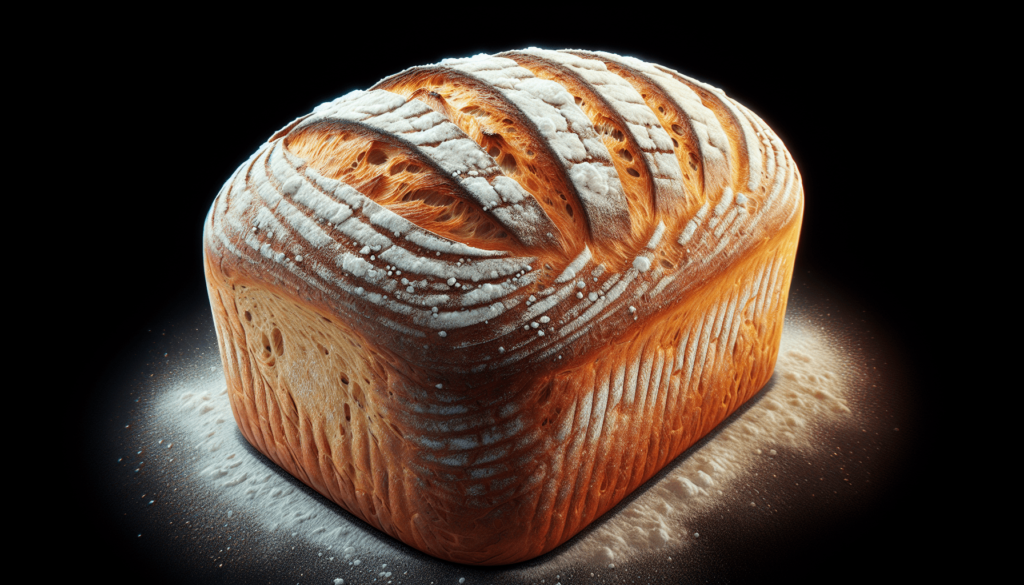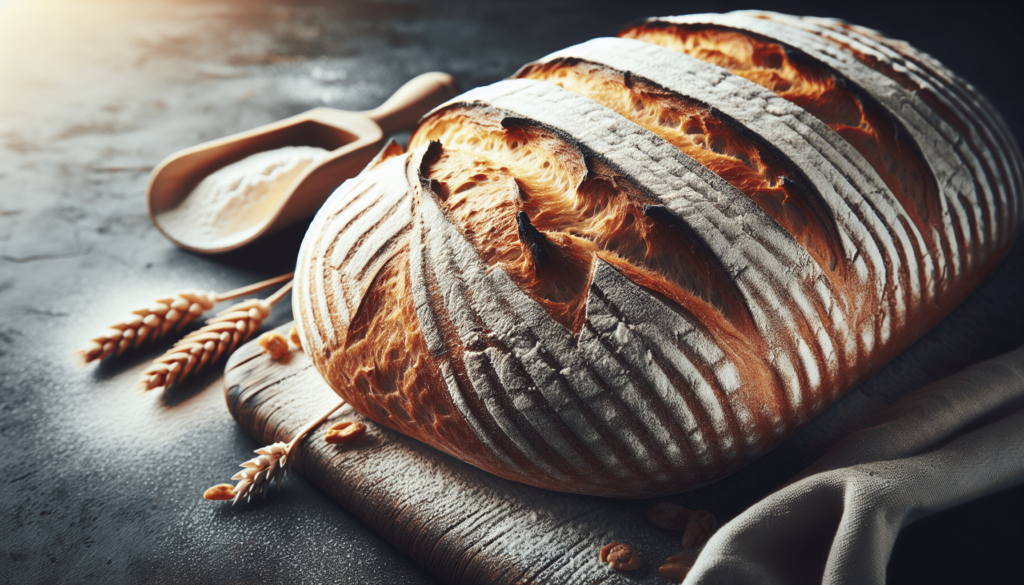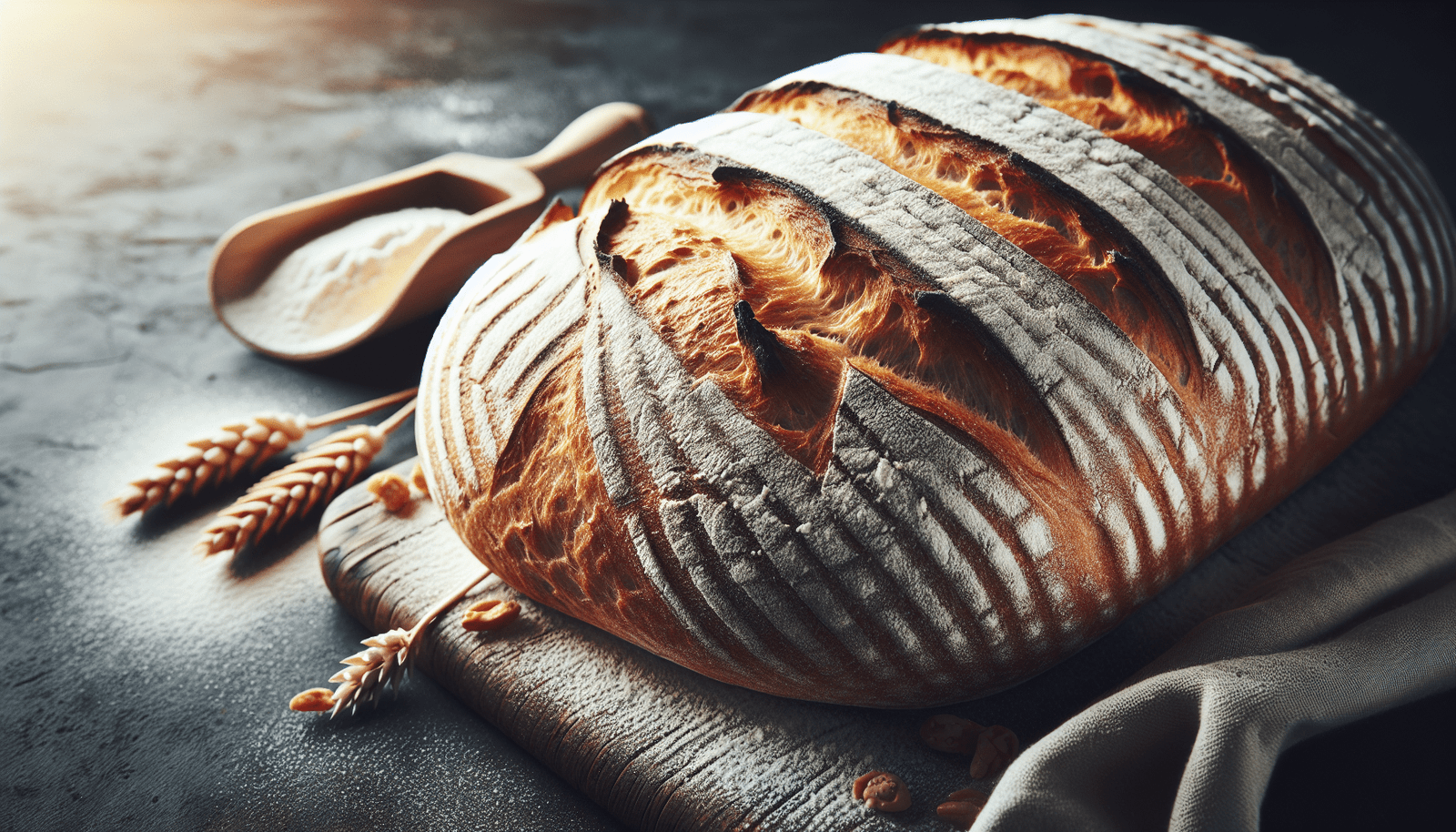Are you craving a hearty and flavourful bread that can stand up to any sandwich filling? Look no further than the Hardo Bread Recipe. This simple yet delicious recipe will guide you through the process of creating your very own hardo bread at home. With its crusty exterior and soft, chewy interior, this bread is perfect for sandwiches, toast, or simply enjoyed on its own. Say goodbye to store-bought loaves and hello to homemade goodness with this Hardo Bread Recipe.
Ingredients
To make hardo bread, you will need the following ingredients:
All-purpose flour
All-purpose flour is the main ingredient for making hardo bread. It provides the structure and texture to the bread.
Yeast
Yeast is essential for the bread to rise. It converts the sugars in the dough into carbon dioxide, causing the bread to become light and fluffy.
Salt
Salt enhances the flavor of the bread and helps to regulate the yeast’s activity.
Water
Water is needed to hydrate the ingredients and activate the yeast.
Preparation
To prepare hardo bread, follow these steps:
Activate the yeast
In a small bowl, dissolve the yeast in warm water according to the package instructions. This process activates the yeast and ensures optimal rising.
Mix the dry ingredients
In a large mixing bowl, combine the all-purpose flour and salt. Mix them together to ensure even distribution of the salt.
Add water and create dough
Pour the yeast mixture into the bowl with the dry ingredients. Gradually add water while stirring until a dough forms. Adjust the amount of water as needed, as different flours may require varying levels of hydration.
Knead the dough
Transfer the dough to a floured surface and knead it for about 10 minutes. Kneading develops the gluten in the dough, giving it elasticity and structure.
Let the dough rise
Place the dough in a greased bowl and cover it with a damp cloth. Allow it to rise in a warm, draft-free area until it doubles in size. This process can take anywhere from 1 to 2 hours.
Shape the bread
Once the dough has risen, punch it down to release any trapped air bubbles. Transfer it to a lightly floured surface and shape it into the desired form, such as a loaf or rolls.
Proof the bread
Place the shaped dough onto a baking sheet or into a greased loaf pan. Cover it with a damp cloth and let it rise for a second time. This secondary rise helps to strengthen the gluten and improve the texture of the bread.
Bake the bread
Preheat the oven to the appropriate temperature mentioned in the recipe. Once preheated, bake the bread until it is golden brown and sounds hollow when tapped on the bottom. The cooking time can vary depending on the size and shape of the bread.

Tips and Variations
Here are some tips and variations to enhance your hardo bread:
Adding herbs or spices
To add more flavor to your bread, consider incorporating herbs or spices into the dough. Options like rosemary, garlic powder, or even cinnamon can elevate the taste profile.
Using different flours
Experimenting with different flours, such as whole wheat or rye flour, can give your hardo bread a unique and complex flavor. Just keep in mind that different flours may require adjustments in the amount of water or rising time.
Adding seeds or nuts
For added texture and nutritional value, consider incorporating seeds or nuts into the dough. Popular options include sesame seeds, sunflower seeds, or chopped walnuts.
Adjusting baking time and temperature
If you prefer a softer crust, you can reduce the baking time or lower the oven temperature slightly. On the other hand, if you like a crustier bread, increase the baking time or temperature.
Common Mistakes
Avoid these common mistakes when making hardo bread:
Using old yeast
Using expired or old yeast can result in bread that fails to rise properly. Always check the expiration date on the yeast package and make sure it is fresh.
Not letting the dough rise enough
Proper rising time is crucial for obtaining the desired texture in the bread. If the dough doesn’t double in size during both rising stages, the final bread may be dense and heavy.
Over-kneading the dough
While kneading is necessary to develop gluten, over-kneading can make the bread tough and dense. It’s important to knead the dough just until it forms a smooth and elastic texture.
Skipping the proofing step
Proofing the bread after shaping is important as it allows the dough to recover from the shaping process, resulting in a lighter final product. Skipping this step may lead to a denser texture.

Frequently Asked Questions
Here are answers to some frequently asked questions about hardo bread:
Can I use whole wheat flour?
Yes, you can use whole wheat flour to make hardo bread. However, keep in mind that whole wheat flour absorbs more water than all-purpose flour. Adjust the amount of water accordingly and be prepared for a denser texture.
What if I don’t have a stand mixer?
If you don’t have a stand mixer, you can still make hardo bread by kneading the dough by hand. It may require a bit more time and effort, but the end result will be equally delicious.
Can I freeze the dough?
Yes, you can freeze the dough for future use. After the first rise, divide the dough into portions and shape them. Place the shaped dough in freezer-safe bags and freeze. When ready to bake, thaw the dough in the refrigerator overnight, then proceed with the proofing and baking steps.
How long will the bread stay fresh?
Freshly baked hardo bread will stay fresh for about 2-3 days when stored properly. Wrap it tightly in plastic wrap or store it in an airtight container at room temperature.
Serving and Storage
Here are some serving suggestions and tips for storing hardo bread:
Sliced and toasted with butter
Enjoy hardo bread by simply slicing it and toasting it until golden brown. Spread some butter on top for a delicious and satisfying snack or breakfast.
As a base for sandwiches
Hardo bread makes a great base for sandwiches. Its hearty texture and flavor provide a delicious platform for your favorite fillings and toppings.
Freezing for future use
If you have leftover bread or want to make a large batch in advance, you can freeze hardo bread. Slice the bread, wrap each slice tightly in plastic wrap, and place them in freezer bags. Thaw slices as needed and enjoy.
Proper storage to maintain freshness
To keep hardo bread fresh for longer, store it in a paper bag, bread box, or airtight container. Avoid storing it in the refrigerator, as it can make the bread dry and stale faster.
Health Benefits
Hardo bread offers several health benefits:
Source of carbohydrates
Bread, including hardo bread, is a good source of carbohydrates. Carbohydrates are the body’s primary source of energy, making hardo bread a great choice for athletes or anyone needing a quick energy boost.
Contains essential nutrients
Hardo bread made with all-purpose flour contains essential nutrients such as iron and B-vitamins. These nutrients play a vital role in supporting overall health and well-being.
Promotes healthy digestion
The fiber content in hardo bread aids in digestion and promotes a healthier digestive system. It contributes to normal bowel movements, reducing the risk of constipation.
Naturally low in fat
Hardo bread generally has a low fat content, making it a healthier choice compared to other baked goods that may be high in saturated fats.
History of Hardo Bread
Hardo bread has a rich history in European cuisine. Here’s a brief overview:
Origins in European cuisine
Hardo bread has its roots in traditional European baking techniques. It was developed as a way to preserve grains for longer periods of time, making it a staple food for many cultures.
Traditional uses and significance
Traditionally, hardo bread was known for its durability and long shelf life. It was typically enjoyed by soldiers, sailors, and travelers due to its ability to withstand harsh conditions and remain edible for extended periods.
Popular variations in different cultures
Throughout Europe and beyond, different cultures have put their spin on hardo bread. From the dense and hearty German vollkornbrot to the crusty French baguette, each variation provides a unique flavor and texture.
Conclusion
Hardo bread is a versatile and delicious bread that can be enjoyed in various ways. By following the simple recipe and understanding the tips and variations, you can create your own homemade hardo bread. With its health benefits and rich history, hardo bread is definitely worth trying. So grab your ingredients, put on your apron, and get ready to bake some mouthwatering hardo bread!

